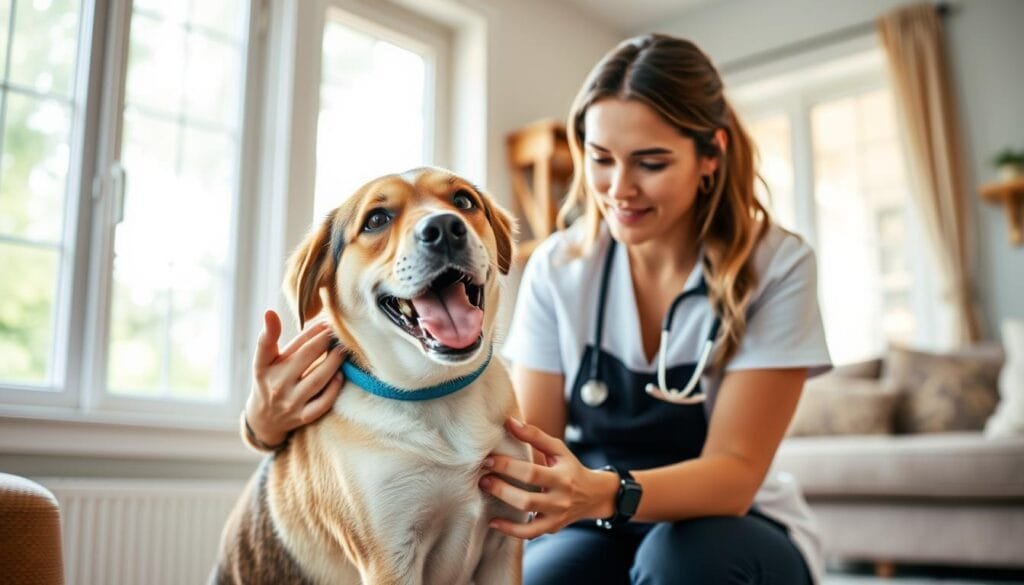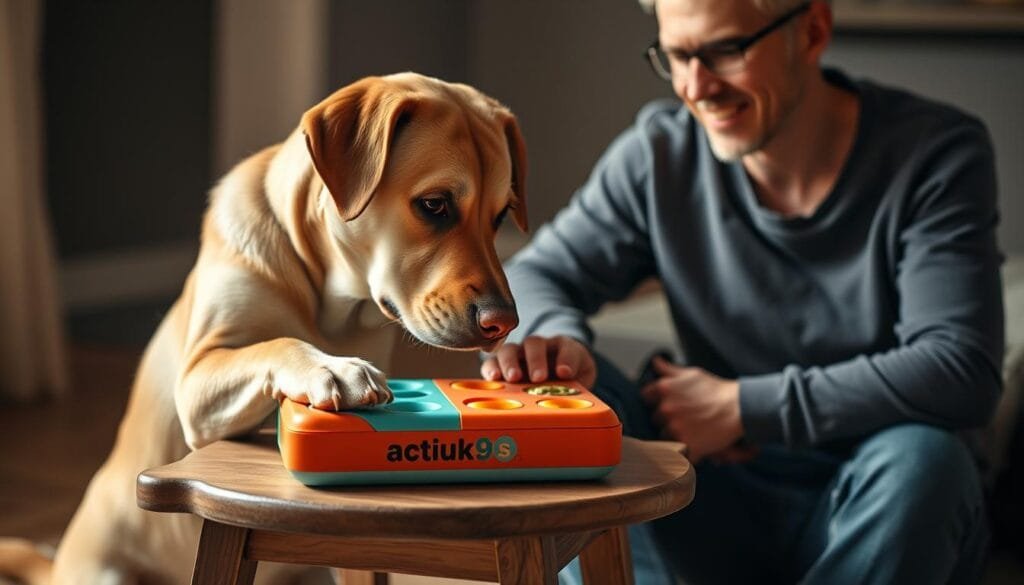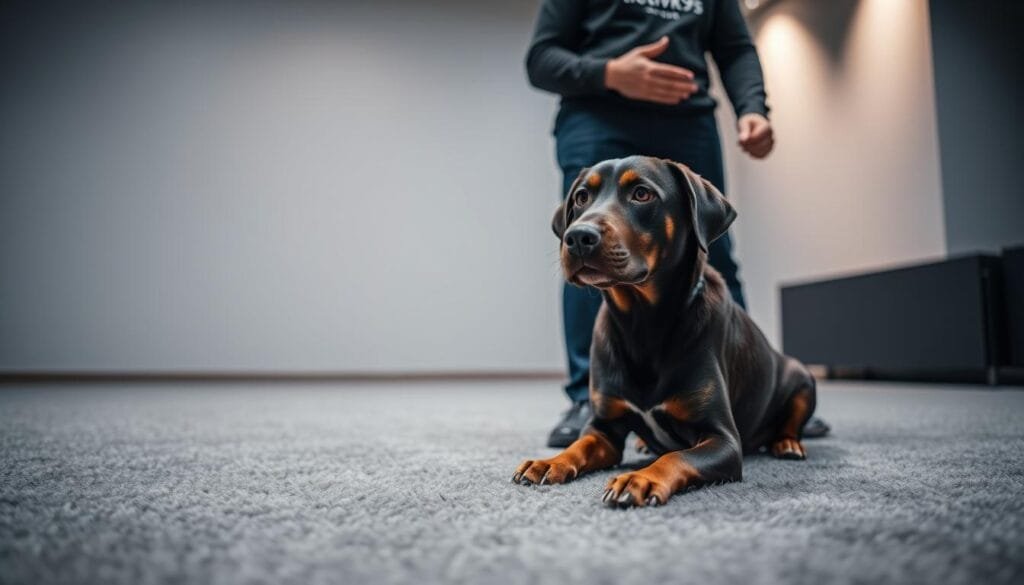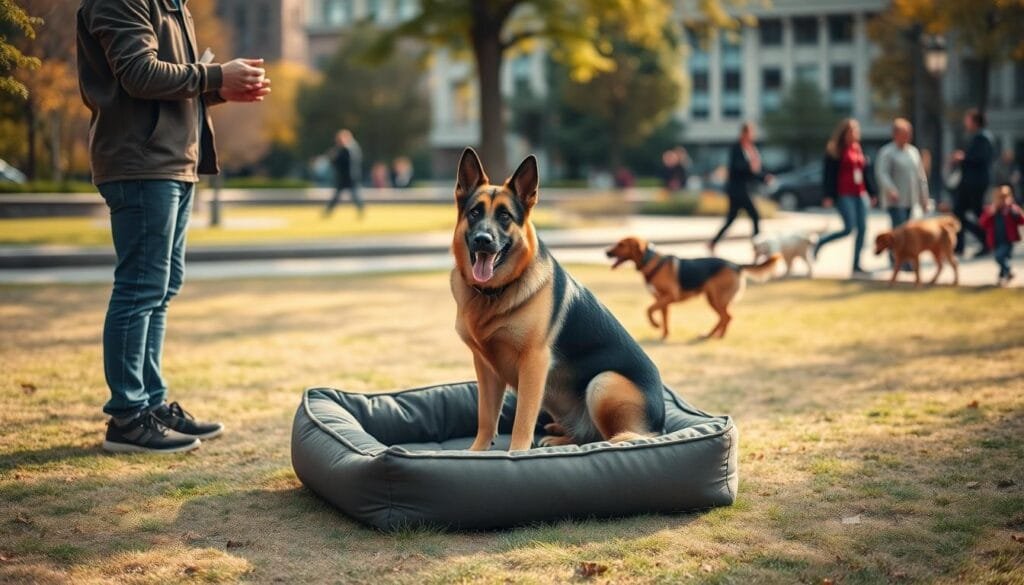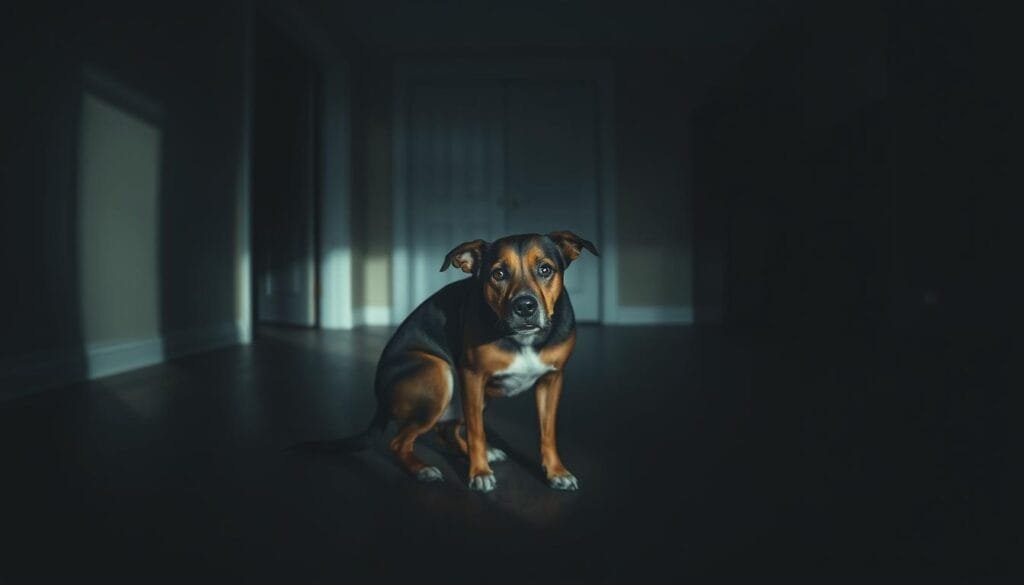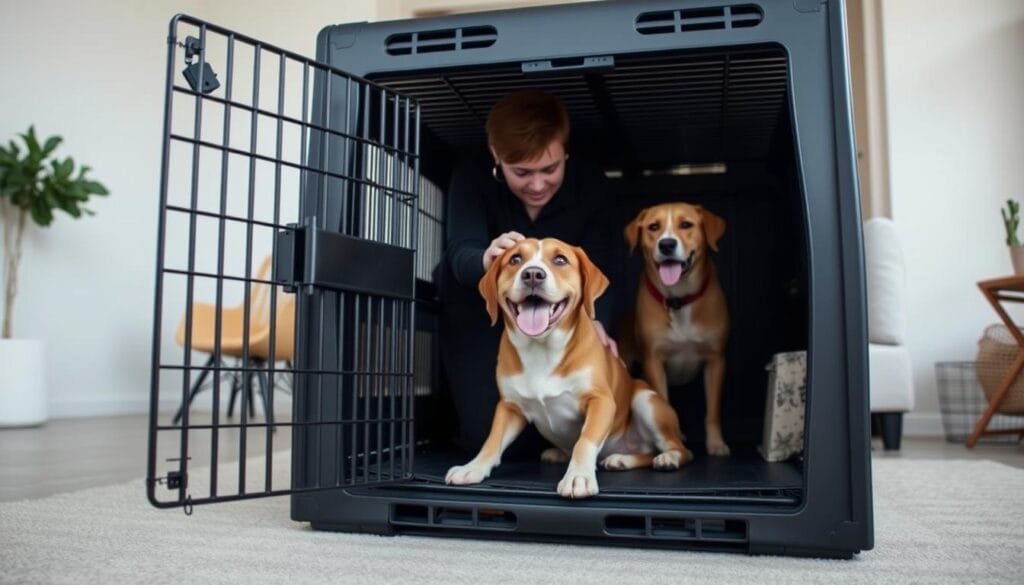Puppy Training in Clonmel: Unleash Your Pup’s Potential
Have you ever wondered how to bring out the best in your furry companion? At activk9s, we believe every dog has immense potential waiting to be unlocked. Our passion lies in helping you build a strong, trusting bond with your pet through force-free, science-based training methods.
Starting early is crucial. By focusing on positive reinforcement, we help your dog develop confidence and good behaviour from the very beginning. Our approach is rooted in proven techniques that ensure your pet feels safe and supported throughout the process.
At activk9s, Clonmel puppy trainer we’re committed to specialist development for every dog. Malcolm, our dedicated trainer, brings warmth and expertise to every session. Whether you’re at home or on the go, our mobile services make it easy to get started. Simply call 089-4120124 to begin your journey.
Every dog is unique, and we tailor our methods to suit their individual needs. Together, we’ll explore effective techniques that create a happy, well-adjusted companion. Let’s unlock your dog’s potential today!
Key Takeaways
- Force-free training builds trust and confidence in your dog.
- Starting early with positive reinforcement is essential for development.
- Science-based methods ensure effective and safe training.
- Personalised sessions cater to your dog’s unique needs.
- Mobile services offer convenience and flexibility for busy owners.
Why Choose ActivK9s for Your Puppy Training Journey
What makes ActivK9s stand out in the world of dog training? Our commitment to force-free, science-based methods ensures your pet thrives in a safe and supportive environment. We believe every dog deserves a chance to shine, and at dog trainer Clonmel our tailored approach makes it possible.
Expertise of Trainer Malcolm
With years of experience in Clonmel and Tipperary, Malcolm brings unparalleled expertise to every session. His passion for helping dogs and their owners is evident in his personalised approach. Malcolm’s dedication ensures measurable progress and a positive experience for all.
Passion for Force-Free Training
At ActivK9s, we prioritise humane, reward-focused techniques. Our methods are rooted in science, making training both effective and enjoyable. This approach not only builds trust but also fosters a strong bond between you and your pet. If you are looking for a puppy trainer near me call acyivk9s in Clonmel.
Here’s how ActivK9s compares to traditional training methods:
| Aspect | ActivK9s | Traditional Training |
|---|---|---|
| Methodology | Force-free, reward-based | Often uses punishment |
| Focus | Building trust and confidence | Immediate obedience |
| Results | Long-term behavioural improvements | Short-term compliance |
Dog owners across Clonmel trust ActivK9s for our proven results and compassionate approach. Let us help you unlock your pet’s potential today.
Puppy training in clonmel
Every dog deserves a strong start in life, and that begins with early development. At ActivK9s, we focus on laying the groundwork for a confident, well-behaved companion. Our specialist programme is designed to bring out the best in your pet, ensuring they grow into a happy and socialised adult.
https://www.youtube.com/watch?v=hbiIfTt5XMA
Specialist Puppy Development Training
Starting early is essential for long-term success. Puppies learn faster with positive reinforcement, which builds trust and confidence. Our methods include crate training and early socialisation, both of which are crucial steps in their development. At activk9s we offer puppy trainer Clonmel specialist training.
We tailor our approach to suit all breeds, ensuring every dog receives the attention they need. Whether you’re a first-time owner or an experienced pet parent, our bespoke plans are designed to meet your unique requirements.
Flexible Training Schedule Tailored to Your Needs
We understand that every owner has a busy lifestyle. That’s why we offer flexible scheduling to fit around your routine. Our goal is to make the process as convenient as possible, so you can focus on building a strong bond with your pet.
By starting early, you’ll see the benefits in your dog’s behaviour and obedience. Our commitment to force-free, science-based methods ensures a positive experience for both you and your pet. Let us help you create a well-adjusted companion from the very beginning.
Force-Free and Science-Based Training Methods
Science-based methods are transforming the way we train our dogs. At ActivK9s, we focus on force-free techniques that prioritise your pet’s well-being. These methods are rooted in research, ensuring they are both effective and humane.
Our approach is built on trust and understanding. By avoiding punitive measures, we create a safe environment where your dog can thrive. This method fosters a positive relationship between you and your pet, making training a rewarding experience for both.
Positive Reinforcement Techniques
Positive reinforcement is at the heart of our training philosophy. We reward desirable behaviours, encouraging your dog to repeat them. This technique not only builds confidence but also strengthens the bond between you and your pet.
For example, when your dog follows a command, they receive praise or a treat. This simple yet effective method ensures long-term success. It’s a proven way to shape behaviour without causing stress or fear.
Proven Behavioural Improvements
Our science-based methods deliver measurable results. Dogs trained with positive reinforcement show significant improvements in behaviour. They become more obedient, confident, and well-adjusted.
One of our clients shared,
“The change in my dog’s behaviour was remarkable. He’s now more responsive and happier than ever.”
These real-life success stories highlight the effectiveness of our approach.
By focusing on force-free, science-based methods, we ensure your dog’s training is both enjoyable and impactful. Let us help you create a harmonious relationship with your pet today.
Tailoured Training for All Breeds
If you are searching for a professional dog trainer near me look no further.No two dogs are the same, and neither should their training be. At ActivK9s, we understand that every breed has unique traits and instincts. That’s why we design custom training programmes tailored to your pet’s specific needs.
Our sessions are carefully planned to accommodate the individuality of each dog. Whether your pet is a lively Labrador or a calm Collie, we adapt our methods to suit their personality. This breed-specific approach ensures better obedience and behaviour.
Choosing the right place for training is just as important. We create a welcoming environment where every dog feels at home. Our one-on-one sessions allow us to focus on your pet’s progress, ensuring they receive the attention they deserve.
We’re committed to understanding your dog’s natural instincts and requirements. From small breeds to larger ones, our methods adapt seamlessly. This ensures a positive experience for both you and your pet.
At ActivK9s, we believe in fostering a friendly, expert atmosphere. Our goal is to help your dog thrive while building a strong bond with you. Let us tailor a training plan that brings out the best in your furry friend.
Addressing Reactivity Issues with Compassion
Reactivity in dogs can be challenging, but with the right approach, it’s manageable. Whether it’s barking at strangers or lunging at other animals, reactive behaviour often stems from fear, anxiety, or lack of socialisation. Understanding the root cause is the first step towards helping your dog feel more secure.
At ActivK9s, we use compassionate, force-free techniques to address these issues. Our methods focus on building trust and reducing stress, ensuring your dog feels safe throughout the process. By rewarding calm behaviour and gradually exposing them to triggers, we help them learn to respond positively.
Patience and consistency are key. One of our clients shared,
“With Malcolm’s guidance, my dog went from reactive to relaxed. It’s been a game-changer for us.”
This success story highlights the effectiveness of our approach.
Here are some practical tips for managing reactivity:
- Stay calm and avoid punishing your dog, as this can increase anxiety.
- Use positive reinforcement to reward calm behaviour.
- Gradually introduce your dog to triggers in a controlled environment.
- Celebrate small progress to build confidence over time.
Every dog’s journey is unique, and we measure progress individually. Our goal is to create a harmonious relationship between you and your pet, fostering mutual respect and understanding. Let us help you navigate reactivity challenges with compassion and expertise.
Mobile and Accessible Training Options
Finding the right support for your dog’s development shouldn’t feel like a challenge. At ActivK9s, we bring expert guidance directly to you, ensuring convenience and accessibility for every owner. Whether you prefer on-site sessions or virtual consultations, we’ve got you covered.
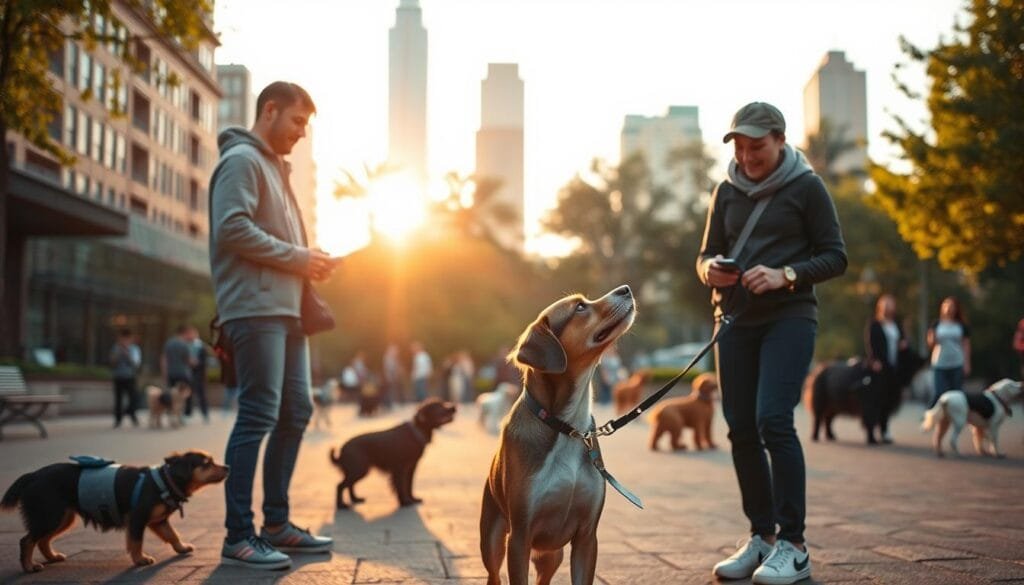
On-Site Sessions for Personalised Guidance
Our mobile services are designed to make training as easy as possible. We come to your preferred place, whether it’s your home or a local park, to provide tailored sessions. This personalised approach ensures your dog feels comfortable and confident in familiar surroundings.
Benefits of on-site sessions include:
- Customised plans that fit your dog’s unique needs.
- Flexible scheduling to suit your busy lifestyle.
- A stress-free environment for both you and your pet.
Convenient Virtual Consultations
For those who prefer a digital approach, our virtual consultations offer the same level of expertise from the comfort of your home. These sessions are ideal for busy owners or those in remote locations. With user-friendly technology, we ensure a seamless experience.
Why choose virtual consultations?
- Accessible from anywhere, saving you time and effort.
- Flexible options to fit your schedule.
- Expert advice tailored to your dog’s specific needs.
Booking a session is simple. Just call us or fill out an online inquiry, and we’ll take care of the rest. Our commitment is to make expert guidance available to every owner, no matter where you are. Let us help you create a positive and effective training experience for your furry friend.
Integrating Positive Puppy Development Techniques
Building a strong foundation for your dog’s development starts with the right techniques. Early socialisation, crate training, and behaviour reinforcement are essential for a well-adjusted pet. These methods not only shape their personality but also ensure they grow into confident, happy companions.
Early Socialisation and Crate Training
Introducing your dog to new experiences early on is crucial. Socialisation helps them adapt to different environments, people, and other animals. Pair this with crate training to create a safe space where they can relax and feel secure.
Here’s a step-by-step guide to integrating these techniques:
- Start socialisation between 3-14 weeks, exposing them to varied sights and sounds.
- Use positive reinforcement to associate the crate with comfort and safety.
- Gradually increase crate time, ensuring it’s always a positive experience.
Potty Training and Behaviour Reinforcement
Potty training is a key part of early development. Consistency and patience are vital. Reward your dog for successful attempts, reinforcing good behaviour. This approach builds trust and encourages them to repeat positive actions.
Here’s how to make potty training effective:
| Step | Action | Outcome |
|---|---|---|
| 1 | Establish a routine | Helps your dog anticipate bathroom breaks |
| 2 | Use positive reinforcement | Encourages repeat behaviour |
| 3 | Monitor signs of needing to go | Prevents accidents |
Early reinforcement techniques prevent future behavioural issues. They also support a relaxed, confident approach to learning. By starting young, you set the stage for lifelong good behaviour.
Here are some actionable tips for new owners:
- Be consistent with commands and rewards.
- Celebrate small progress to build confidence.
- Create a calm environment for learning.
With the right techniques, you’ll see remarkable improvements in your dog’s obedience and overall behaviour. Let’s work together to create a happy, well-adjusted companion.
Expert Guidance from Trainer Malcolm
Expert guidance can make all the difference in your dog’s development. At ActivK9s, Malcolm, our dedicated trainer, brings years of experience and a passion for helping dogs and their owners. His personalised approach ensures measurable progress and a positive experience for all.

One-to-One Consultation Options
Our one-to-one sessions are designed to address specific challenges your dog may face. Malcolm tailors each session to your pet’s unique needs, ensuring effective and lasting results. Whether it’s reactivity, obedience, or general behaviour, we’ve got you covered.
One client shared,
“Malcolm’s guidance transformed my dog’s behaviour. He’s now more confident and well-behaved.”
These success stories highlight the impact of personalised training.
Group Classes and Workshops
For those who prefer a social learning environment, our group classes and workshops are ideal. These sessions allow owners to learn alongside their dogs, fostering a sense of community and shared progress. Malcolm’s expertise ensures every participant benefits from the experience.
Here’s a comparison of our training options:
| Aspect | One-to-One | Group Classes |
|---|---|---|
| Focus | Individual needs | Social learning |
| Flexibility | Tailored scheduling | Fixed schedule |
| Environment | Personalised setting | Group dynamics |
Both options are designed to improve your dog’s behaviour and strengthen your bond. Malcolm’s science-based techniques ensure every session is effective and enjoyable.
Whether you choose one-to-one consultations or group classes, you’ll receive expert guidance that makes a real difference. Let us help you create a happy, well-adjusted companion today.
Comprehensive Dog and Puppy Training Services
At ActivK9s, we offer a wide range of services to help your dog thrive in every aspect of their life. Our holistic approach ensures that every programme is tailored to meet the unique needs of your pet, fostering obedience and improving behaviour.
We provide a variety of options to suit every owner’s lifestyle. Whether you prefer one-to-one sessions, group classes, or specialised workshops, our flexible programmes are designed to deliver measurable results. Each place of training is chosen to create a comfortable and effective learning environment for your pet.
Our services include:
- One-to-One Sessions: Personalised guidance tailored to your dog’s specific needs.
- Group Classes: Social learning opportunities that build confidence and obedience.
- Workshops: Focused sessions addressing specific behavioural challenges.
Collaboration is at the heart of our approach. We work closely with you to understand your goals and ensure your dog’s progress. Our trainer, Malcolm, brings years of experience and a passion for helping dogs and their owners achieve lasting success.
Convenience is key. We offer on-site sessions at your preferred location or virtual consultations for busy owners. This flexibility ensures that expert guidance is always within reach, no matter your schedule.
Our commitment to excellence is reflected in every detail. From science-based methods to compassionate techniques, we strive to create a positive experience for both you and your pet. Let us help you build a strong, trusting bond with your furry friend today.
Conclusion
Creating a strong bond with your dog starts with the right approach. At ActivK9s, we believe in force-free, science-based methods that ensure lasting positive outcomes. Our techniques focus on building trust and confidence, making the process enjoyable for both you and your pet.
Malcolm, our experienced trainer, brings a personalised touch to every session. His expertise ensures measurable progress and a supportive environment for your dog training journey. Whether it’s early development or advanced behaviour, we tailor our method to meet your dog’s unique needs.
Ready to see the difference? Call us at 089-4120124 to learn more about our services. Join the ActivK9s family today and take the first step towards a happier, healthier relationship with your dog.
FAQ
Why should I choose ActivK9s for my puppy training journey?
ActivK9s offers expert guidance from Trainer Malcolm, who specialises in force-free, science-based methods. His passion for positive reinforcement ensures your pup learns in a safe and supportive environment.
What makes ActivK9s’ training methods unique?
We focus on force-free and science-based techniques, using positive reinforcement to encourage good behaviour. This approach has been proven to create lasting behavioural improvements.
Can ActivK9s help with reactivity issues?
Absolutely. We address reactivity with compassion and tailored strategies, helping your dog feel more confident and secure in various situations.
Does ActivK9s offer flexible training schedules?
Yes, we provide flexible schedules to suit your needs, including on-site sessions and virtual consultations for added convenience.
What techniques are used for early puppy development?
We integrate early socialisation, crate training, and potty training to lay a strong foundation for your puppy’s growth and behaviour.
Are the training methods suitable for all breeds?
Yes, our tailored approach ensures that every breed, from small to large, receives the right guidance to thrive.
Does ActivK9s offer group classes or one-to-one consultations?
We provide both options. You can choose personalised one-to-one sessions or join group classes and workshops for a collaborative learning experience.
How does ActivK9s ensure a positive training experience?
By using positive reinforcement techniques, we create a stress-free environment that fosters trust and strengthens the bond between you and your dog.


